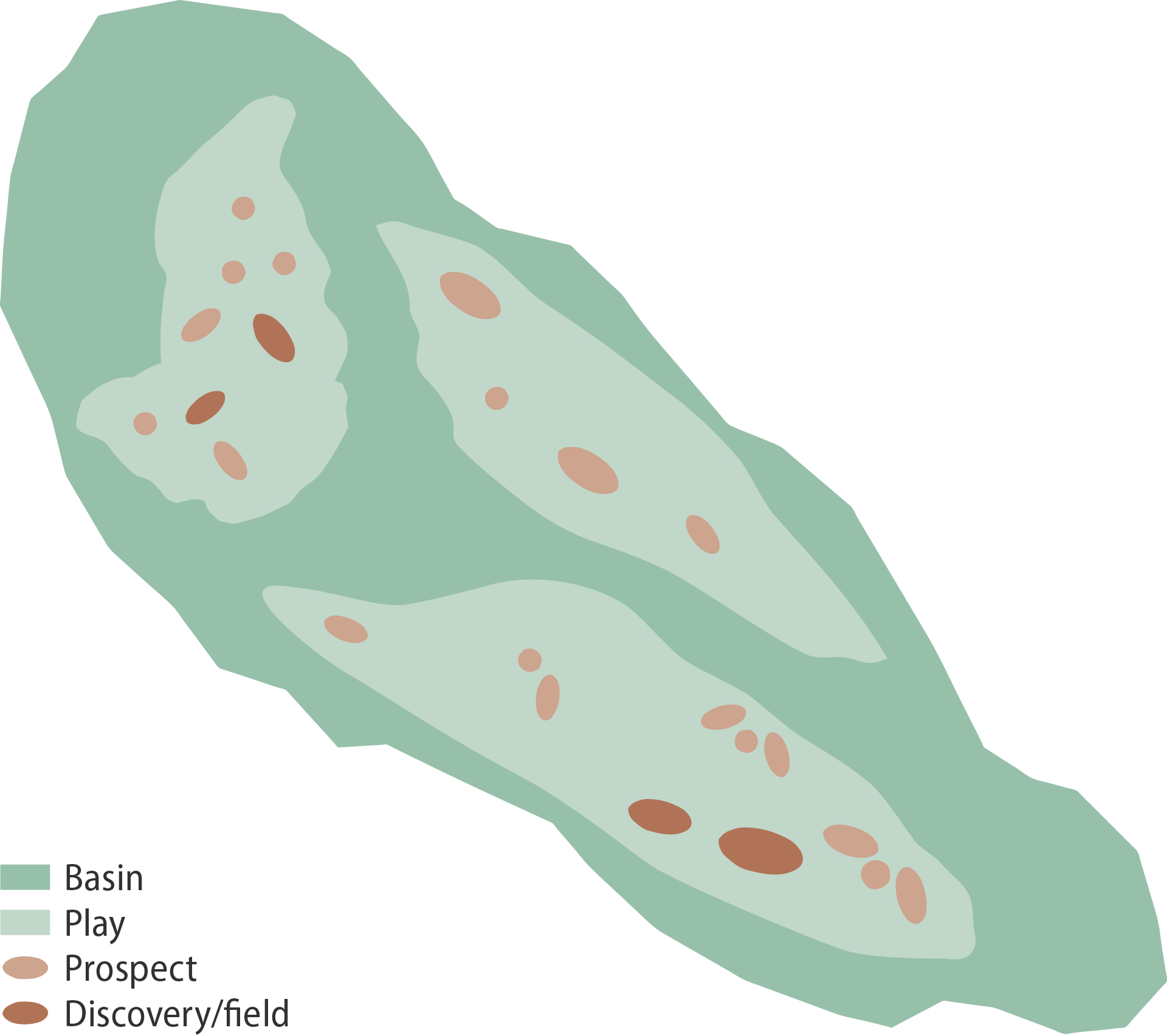Fact box 3.2 What is a play?
A play is a geographically delineated area where several geological factors interact so that producible petroleum can be proven (figure 3.11).
Production does not have to be commercial. These factors are as follows.
- A porous reservoir rock, where petroleum can accumulate.
- A trap, which is a tight rock or geological structure encasing the reservoir rock so that petroleum is retained and accumulated.
- A source rock, such as shale, limestone or coal, containing organic material which can be converted to petroleum. This rock must be mature – in other words, temperature and pressure must be such that petroleum actually forms – and a migration route must exist so that petroleum can move from source to reservoir rock.
- A sedimentary basin, which is an area of subsidence in the Earth’s crust where thick accumulations have accumulated over geological periods. It may contain several plays.

Figure 3.11 Simplified diagram of plays
The play probability is the likelihood that producible petroleum can be proven. A play is confirmed when such petroleum is proven.